Basket Making - Ngadjon
Note: this site contains images of aboriginal people now deceased
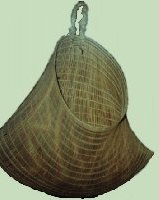
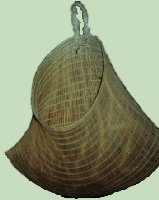
Basket Making
All early European visitors to the lands of the Ngadjonji and other North Queensland rainforest Aboriginies commented on the beauty and functionality of the distinctive two-cornered baskets, finely woven from split Lawyercane. These baskets were called janjuu in Ngadjon.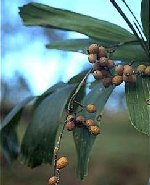

barrga
Photo - John Wrigley © ANBG
Lengths of barrga were collected from the forest, cut to the desired length and passed through a fire to make them more supple. The lengths of cane were then split and scraped until the basket-maker had the required number of uniformly fine strands for the basket.
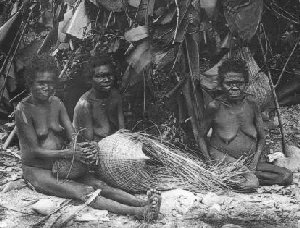
Photo from collection of A.Nye
These were then woven in traditional patterns until the basket was complete.The picture above shows a group of women with a partly completed basket. The large number of strands needed for a fine basket can be clearly seen. A different lawyercane, yapulam, was used for the handle which was woven into the body of the basket. As well as the janjuu, made from lawyercane, the Ngadjonji made baskets using the dried leaves of jiigan (Lomandra sp.) and yagal (Pandanus sp.).
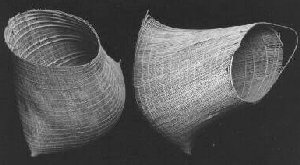
Janjuu - Eacham Historical Society; Photo - K.Mackay
Baskets were used for many purposes especially for collecting fruit and seeds from the forest and for containing the cooked meal from poisonous seeds during the soaking in running water which was necessary to remove the poison (see Food Processing).

